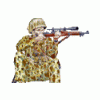Leaderboard
Popular Content
Showing content with the highest reputation on 05/18/2021 in all areas
-
Item No.44 - Kozuka in Shibuichi with gold highlights Subject Shoki and Oni Finely engraved with Katakiri work , Shoki is looking up into a tree where a rather annoyed oni is trying to hide. Signed Rakuosai Michiyoshi - Sano School - Haynes H 05079. Probably dates from around 1800. Purchased 8 years ago from auction in Germany. NBTHK papered.3 points
-
The running of the site is barely covered by the various membership schemes, apparently, meaning that there is very little spare going into the kitty. I would like to offer a rare and unusual object for sale, all proceeds to go to the NMB. It is a large copper *medal, boxed. 200 gm, 3 inches (7.5 cm) across, and it was the first object to be guessed in '20 Questions' here. To the highest bidder by the end of 31 May 2021 midnight Japan time, I will send this, ordinary small air package, postage free. How about a starting price of $20 US? The top bidder will send the money directly to the site, or wherever Brian designates, and I will send the medal directly to them. *These medals were handed to all 90(?) members of the first Japanese Embassy to the USA in Washington DC by President Buchanan in 1860. There were ten or twenty gold and silver medals, and up to 70 copper ones, I believe, but I've long since forgotten the detailed breakdown. Please do your own research. Details of the medal itself are given in the Twenty Questions thread, page 2 below, and the stories behind their curious mission and their enthusiastic reception by the people of the US can be found on the web. Some example links I have also posted in the same Twenty Questions thread, and they make fascinating reading. Condition? Generally fine, with some dings on both sides. (I have owned this one for about 15 years, so I am happy if it is welcomed to a new home.) Never done this before, so, if there are any life-saving suggestions, please say so now. If not, let the thread run. If no-one bids, I will send Brian $20 and happily keep the medal! Brian, OK?2 points
-
Thought others may find this interesting as often these are in full relic condition. I imagine it would've been quite hard for the Togishi to achieve:2 points
-
2 points
-
2 points
-
Its a very poorly written version of 団結している刃物 Sadly, the "United Cutlery" company did not pay for a translator to properly translate the name of their company, and they ended up with this odd-sounding Japanese phrase - probably the result of google translate. At any rate, it doesn't mean united strong steel. More like "blades that are uniting together", which sounds as awkward in Japanese as it does in the google-translated English.2 points
-
I ran across this letter yesterday and I will quote the exact text below. Note that part of the name of the company includes "Japanese Naval" and this would seem to indicate the type of sword the company was manufacturing.2 points
-
I’d like to see what this august community has to say about daisho koshirae – having just acquired something that might be described in those terms. Please see the attached image. Notice that I didn’t say anything about “swords” since neither of these items hold a blade. They’re ‘fittings.’ One has a wood tsunagi and the other has a recent “blade” that is serving as a tsunagi. They each have a nice old iron tsuba but they are dissimilar. Aside from that, however, the fittings are essentially similar handachi koshirae. Black urushi saya and blackened iron kodogu that are overall of “good” quality. I find no signatures or other markings, but everything looks “old”. Indeed, I have the feeling that they might be at least Meiji era. They were presented with an “old” (Edo period?) katana kake. Overall, these things look like ‘old’ swords that were re-purposed in early post-War times as decorative items. They are quite presentable and certainly not “new” decorators. Okay, here’s my question. I wonder how common similarly mounted daisho really were? Who had to wear a similarly mounted long and short swords? Clearly a lot of guys did NOT need or carry matching sets. I could easily see the rig I just acquired as something like a formal outfit that some low-level functionary had to have in the closet for occasional use. In closing, let me also say that I am in the market for a “nice” (but not necessarily special) daisho pair of iron tsuba. Peter1 point
-
1 point
-
A little pocket rocket! My second love is antique firearms. I have a great affinity for oddball calibers and design concepts. My favorite being the Walther Model 1 and 2 .22 autoloader rifles. They're WILD in that they're both bolt-action 5 or 10 round magazine fed .22 rifles; but if you turn the bolt up, they fire in semi-automatic! I have both, and I cherish them. Plus they get some looks at the range when I switch them over to semi-auto! I found my Model 1 in a local shop, broken and in pieces. Bought for $100 and had a gunsmith who specializes in antique firearms repair it; charged me $125. Best $225 I ever spent. Loved it so much, I bought a Model 2 (which is much beefier)1 point
-
Hi Chris, Yes, amazing indeed. I know this is a nihonto board, but I couldn't resist adding to Dave's post....in fact, the same family gave me their mother's settler revolver also. Women back then often carried arms when driving wagons or were passengers in coaches...this is a little Belgian Francotte revolver cal 297/230 which is about 22 cal but with a more powerful charge. (this was a common cadet rifle round in the British Empire 1890-1930). The owner was Ida Borstel, married to the soldier Sgt Dick Borstel in the pic (standing rear middle). She was born Natal South Africa 1881 and came to Western Australia 1907. She married Mr Borstel in 1923 and they were rural settlers. The Hood and Borstel families intermarried. (sorry for this Brian)... Regards,1 point
-
Ah yes "Tachi-kanagushi". Basically = Ko-kinko for a tachi attribution. I'm more than fine with that. The Ko-Mino tsuba would be a more specific version of Tachi-kanagushi. I talked to a friend about the Yahoo!Japan one. Both of us thought it more likely Shoami than Higo (Kanshiro). The friend was excellent to scan in the translation of Ito-san's comments on it and it was atypically weak commentary. The Kanshiro book is the thinnest of his books, and I'd put it forth that this one was "filler". I kinda like it, but only because the Hikozo [see Nihonto.com ones for sale] ones are all Juyo and above my pay grade.1 point
-
You guys rock! Thanks so much Piers for the support, and to you guys for your offers too.1 point
-
Glad I joined this community and began doing my research before I got too far into this hobby! Looks like it's easy for a novice to get scammed. One of the best comments I read was where advice was given to novices to do a lot of reading and research to build a basic knowledge base before purchasing and investing in Nihonto.1 point
-
There are other smiths who signed Nagamitsu, besides Ichihara Nagamitsu.1 point
-
九三式十三粍二聯装機銃二型改一 – 93 Type 13mm dual gun, Type 2 Rev.1 照準望遠鏡格納筐 – Telescopic sight box1 point
-
Absolutely fake. There are a range of bohi styles and none are like that. Clear signs of a fake, though the other details are okay from a fuzzy photo. Skinny habaki and handle. Fake, but a well made one. Not Polish; they are Iijima. The most obvious sign are the saya serial numbers, but the overall quality of the fuchi stamps and tsuka (suspiciously absent of paint) are also telling. Patina looks artificial. The blade serial numbers are excellent though. Suspension ring is correctly located. Kissaki is a dumpy mess. Both of these swords are a next step up from the usual rubbish. There are similar examples in this thread. It is becoming a bit of a concern.1 point
-
1 point
-
Surprisingly cool for something on Ebay. While unsigned soshu work from the Muromachi period aren't highly regarded (and discounted heavily) - the fact that it is a katana-size Naginata Naoshi in full Hitatsura makes this a rarity. But I do have a bad feeling about it. The Koshirae makes me pause. That's the Ageho-cho from the Taira clan, first time I've seen it on a Koshirae, and it's clearly not an old koshirae. I would ask the seller to inspect the Menuki, they do look like they could be solid gold dragons, or some cheap cast plated dragons and this whole set the fruit of an elaborate dress-up party we see so often on YJP! - so buyer's beware. Something doesn't feel right here. This is likely a hobbyist koshirae project from the 20th century, but who knows...just be careful out there, this is a Japanese dealer, and problem-blades are sold on the foreign market for a reason. Treat it as a grenade with the pin removed. The seller has information asymmetry on his side and close geographic and cultural contact with the world's best experts. We do not.1 point
-
Thank you all - indeed I would love to hit the books, but so few are in English [or German] the only ones I can read. So Kanshiro is out, who is in? I too don't think my guard has great age, utsushi of who or what? I did have an image of yet another with the identical fukurin, in that case there was a slightly raised central plate both sides with conventional nami (wave) engraving, the thin (shakudo) plates were riveted at the seppa-dai in sanmei fashion. [unfortunately the image is now missing from my database] Whatever they are, they are all linked by the style of fukurin (odawara?) I just came across this image - same fukurin1 point
-
1 point
-
If you ask the modern Japanese swordsmith, "Which hamon is the most difficult?", Everyone will answer: "It's nothing but Choji midare!" I think that is one of the barriers in terms of skill. Kanekuni won the competition with his toran hamon, which was aimed at Sukehiro, so his work is often said to be toran. However, if you look closely, you can find togari ha and stiff hamon here and there. This indicates that he is a descendant of the Mino seki school, a characteristic that can be seen in his regular works.1 point
-
John & Chris, thanks for the compliments! Christopher, don't worry - Oshigata and professional pictures were already "ordered". They finally are something to then share in here too. Michael, the blade is already polished. It was sent to Japan, Tanobe confirmed signature being authentic, then submitted to NBHTK Shinsa where it was also confirmed original, but papers will only be issued to blade in polish. Therefore it got a double gold habaki, shirasaya and was polished by Saito, submitted again for December shinsa where the result now was Tokubetsu Hozon paper achieved. So all done. Not sure if I should submit it to Juyo though, would mean another year in Japan.1 point










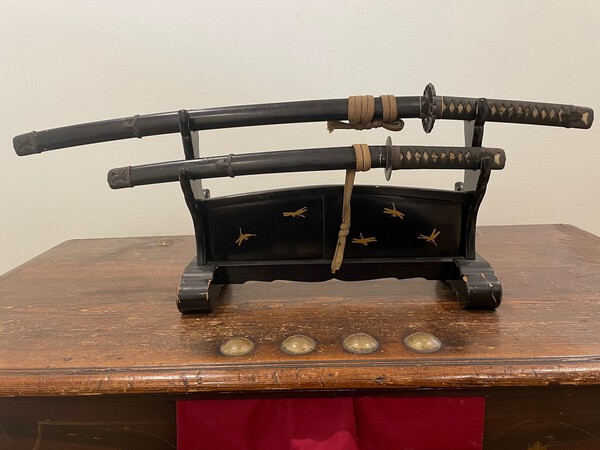





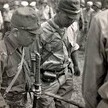


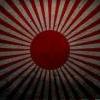

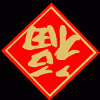
().thumb.jpg.85011afa60ad9de5ea910b4cec595351.jpg)

